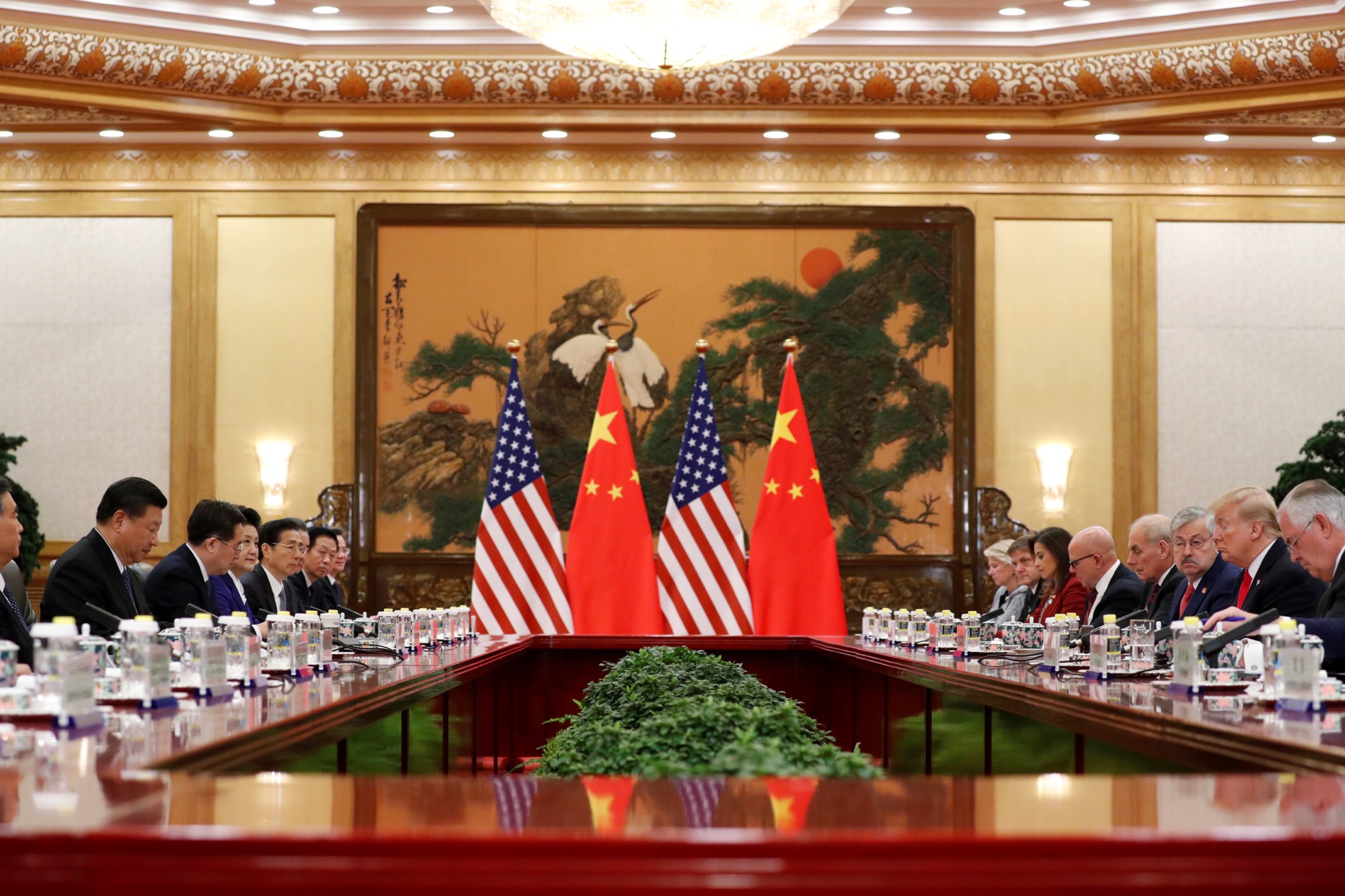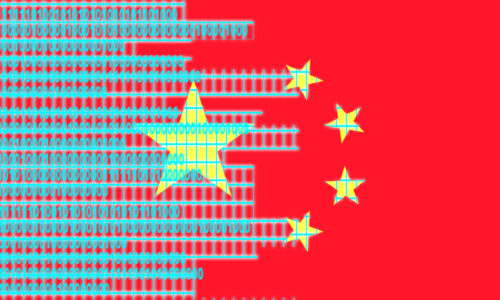Distrust but verify: How the U.S. and China can work together on advanced technology

Beijing and Washington are locked in a tech cold war that will threaten global prosperity and stability for decades to come.
![]()
Competition between Beijing and Washington for supremacy in advanced technology is now in full swing. On September 27, Rèn Zhèngfēi 任正非, chief executive of Chinese networking equipment giant Huawei, claimed the company had begun producing its first 5G mobile network base stations without U.S. parts. This was the inevitable result of the U.S. administration’s decision in May to restrict access for China’s most important global technology company to U.S. hardware and software on national security grounds. It marks an important milestone — and a key test — in the growing technology cold war.
While it is not yet clear whether Huawei can remain globally competitive in either network equipment or mobile handsets without easy access to U.S. innovation, particularly the technologies and software required to stay at the cutting edge in semiconductors and mobile operating systems, Huawei seems determined to make a go of it. Even if the company manages to get some relief as part of an eventual settlement in the U.S.-China trade fight, powerful political forces are likely to drive more U.S. and Chinese technology firms to design their products in ways that avoid each other’s technology.
The U.S. is deeply concerned about risks to national and economic security stemming from China’s technology rise. President Donald Trump’s administration remains determined in its campaign to decouple the U.S. and Chinese technology sectors and to drive sensitive technology supply chains out of China. Beijing will continue to respond by pushing for self-sufficiency in advanced technologies.
It’s this new tech cold war, more than the trade logjam that’s currently dominating headlines, that will threaten global prosperity and stability for decades to come. Although there is still time, a coalition of committed states and companies should establish a new forum to manage this new, 21st-century geopolitical competition.
The competitive struggle and the risks
The U.S. and China increasingly view prowess in artificial intelligence (AI), robotics, quantum computing, 5G communications, and other technologies developed by their private-sector tech firms as a matter of economic and national security. Already, both sides are seeking an advantage by limiting the export of know-how to the other and by tightening restrictions on investment in their sensitive tech sectors.
The prize is power in tomorrow’s international system. Control of the international marketplace is at stake, because advanced technology will help run the global economy. Technology supply chains and dependencies will anchor future alliances and trading relationships. At the same time, leadership in technology will prove advantageous on the national security front. The Trump administration maintains that the U.S. innovation base and its military applications are central to protecting the country’s security. Chinese leaders, similarly, believe that civilian technological advances go hand-in-hand with leaps in the military sphere.
The Huawei episode shows that the future is upon us. The U.S. placed restrictions on Huawei primarily because of fears that the Chinese government could use the company to penetrate and disrupt vital telecommunications networks around the globe. That would undermine U.S. national security. The U.S. also seeks preeminence for its firms in the next wave of emerging technology applications that will be built on top of 5G networks once they are fully rolled out — a complex and expensive project that is just getting started and will take up to a decade to complete. Washington is resisting efforts by Beijing to help Chinese firms take the lead in this enormous new field of technology-enabled economic competition, which will encompass smart cities and driverless cars to new, multibillion-dollar industries that no one yet knows of.
More broadly, the Trump administration is seeking to decouple the U.S. and Chinese economies, especially in advanced technology sectors. Moves to cut off Huawei from access to U.S. technology and ban the use of Huawei equipment in U.S. networks while pressuring allies to do the same are only the start. Heightened U.S. scrutiny of foreign investments in domestic companies that work on sensitive technologies, have access to critical infrastructure, or traffic in personal data is already having a chilling effect on investment. Chinese FDI last year was down nearly 90 percent compared to 2016, according to the Rhodium Group. Deals are being blocked, and some transactions have even been unwound as the Committee on Foreign Investment in the United States (CFIUS) takes a harder line and expands the types of deals it reviews.
The next step in the U.S. effort to tighten its grip on advanced technologies is to develop lists of “emerging” and “foundational” technologies that are subject to enhanced export controls. These are likely to include important semiconductor and related manufacturing and design technologies, as well as AI-related services and components. This will further clamp down on the flow of U.S. technology know-how to China and other countries deemed a threat to its “national security innovation base.”
The Trump administration has drawn a bright red line around Silicon Valley, declaring significant parts of the U.S. innovation system off limits to its geopolitical rivals.
This is a dramatic departure from the hands-off approach to digital technologies that has driven U.S. innovation in the decades since the end of the Cold War. In effect, the Trump administration has drawn a bright red line around Silicon Valley, declaring significant parts of the U.S. innovation system off limits to its geopolitical rivals, especially China. While the administration has been driving the policy, this new, more aggressive approach to technology control is enshrined in legislation, has strong bipartisan support in Congress, and will outlast the current administration.
China, in response to U.S. pressure, is creating an unreliable entities list and will continue to enforce laws such as the 2016 cybersecurity law in ways that could hinder market opportunities for U.S. firms, particularly if trade talks are once again derailed. China is also doubling down on domestic innovation. President Xi Jinping recently described the push for technology independence from the U.S. as the beginning of another “Long March.” As attitudes on both sides harden, it will become more difficult to reverse course.
The current tariff war will accelerate this tech competition. The ill will generated from that battle will speed and deepen the long-term tech confrontation. On October 11, the U.S. and China apparently reached a “mini-deal” under which China will buy more agricultural goods and undertake certain reforms, while the U.S. will defer raising tariffs. But the chance of a comprehensive deal is very low, as major disagreements separate the sides on key issues. The tariff war will very likely further sour relations and stoke competition over advanced technology.
For other countries, the battle over the fate of Huawei and 5G is probably a preview of the future, in that Washington or Beijing for national security or economic reasons will seek to restrict each other’s activity both domestically and in third-country markets. In short, nations and their firms will increasingly have to choose between the U.S. and China for sales and purchases in the technology sector — not just for 5G, but potentially also for the entire suite of applications and services that will soon be built on top of full-standalone 5G networks.
The net effect will be lose-lose for everyone. During the past three decades of the digital revolution, technology cooperation boosted the quality of innovation globally. U.S. tech companies and consumers have benefited enormously from the development of globalized technology supply chains that allow them to outsource increasingly complex manufacturing and final assembly to China. Sales of U.S. semiconductors and software to China’s high-tech firms, in turn, generates revenue that helps fund and drive the next generation of U.S. technology products and services.
The benefits to Chinese firms are also huge: They gain technology know-how, jobs, and investment that allows them to continue to move up the high-tech value chain. Over the past decade, buoyed by its enormous internal market and fierce competition among private tech firms, China has become the only other country to give rise to massive digital platform companies capable of competing head-to-head with the best of Silicon Valley in fields such as cloud computing. These companies, along with a growing number of high-powered Chinese AI startups, are at the forefront of emerging applications that combine big data and AI such as smart cities, advanced manufacturing, and driverless cars. Along with producing networking equipment and mobile handsets, Huawei is creating cutting-edge mobile chips — with the help of technologies that it buys from U.S. and other global suppliers, who recycle the profits from these sales back into R&D.
On the current political trajectory, this beneficial feedback loop will be disrupted. For China hawks who think Beijing is working methodically to undermine U.S. economic and national security, that is a desirable outcome. But the arguments in favor of decoupling, which tend to focus on the potential for China to commit espionage or sabotage by embedding backdoors in Western technology products or network infrastructure, or assume that China is on the verge of vaulting past the U.S. in key fields such as AI, quantum computing, or advanced semiconductors, often take too narrow a view of the potential risks and costs. They likewise fail to account for how today’s global innovation ecosystem actually works in Silicon Valley and other tech hubs in Europe and Asia, where U.S. and Chinese firms are highly interdependent.
The competition over advanced technology is inflicting great costs and creating new risks. U.S. firms are already moving some technology supply chains out of China in response to U.S. tariff and non-tariff measures — some 40 percent of U.S. companies in China are either moving manufacturing facilities outside of the country or considering doing so, according to a 2019 study by AmCham China. As this trend accelerates, it will seriously complicate international business. Manufacturers will incur increased costs as suppliers are forced to invest in redundant manufacturing capacity and rebuild logistics networks and manufacturing processes that have been honed in China over recent decades.
Tech advances will also become more expensive as the two powers separately pursue the same technologies, such as 5G — reducing economies of scale and, in the long run, potentially leading to interoperability issues if technologies and related applications are built to different standards. Along with creating wasteful duplication, this will raise transaction costs in the global economy.
Increasing restrictions by both sides on the flow of talented people will further impede beneficial innovation. For the U.S., fewer STEM visas for Chinese and other foreign students will prevent the addition of very bright tech experts to U.S. firms. And in China, the government’s newly restrictive approach to granting visas means domestic firms and U.S. companies with research operations in China will find it harder to access U.S. know-how.
States must work toward a shared concept of when a technology is national security relevant. Nations need to curb the practice of restricting technology flows on security grounds.
A raging tech cold war could likewise have negative effects on global security by further reducing prospects for a coordinated approach to issues such as AI safety or the use of AI in military applications, including lethal autonomous weapons systems. Less communication between leading-edge firms and researchers would heighten the risk that either the U.S. or China makes an unanticipated breakthrough in a strategic technology such as quantum computing. The risk here is not so much a quantum breakthrough per se, but one that catches the other side off-guard, undermining military and other essential encryption with immediate, destabilizing effects on global security.
The temptation to engage in malicious cyberactivity would increase as well during a protracted technology cold war, as both sides ramp up the use of sophisticated offensive cyberoperations to achieve political and economic objectives.
Ultimately, a permanent U.S.-China technology rift would restrict beneficial exchanges of technology, investment, and human capital that drive new technology advances. That would hurt innovation globally, leaving everyone worse off.
A potential solution — a new forum to manage competition
These downsides of the shift toward zero-sum technology competition have tended to receive short shrift in the current policy debate. To avoid them, like-minded nations, drawing on the expertise of relevant firms, should establish a new forum to manage competition in this important new domain. The effort could be led by the UN with backing from the EU, as support for this effort would likely be strong within both organizations.
China might initially resist any “infringement on sovereignty” that this new organization might bring. However, concern over strategic technology competition is deep in Beijing, and it would probably over time join the effort. The Trump administration would be instinctually opposed to any new institution, but international suasion could ease the U.S. stance.
This forum’s top priority should be to develop norms to govern policy. States should not pursue links between AI and weapons, as this nexus risks the catastrophic loss of human control over weaponry. Nations should not pursue the use of quantum computing to break other states’ ability to encrypt, since the ability to protect financial and critical infrastructure-related data is necessary for nations to feel secure. Reduction of IP theft for commercial gain will similarly be an important goal, as the practice stokes mistrust between states. This would also be the forum to address human rights issues stemming from the use of big data, facial recognition, and other AI applications.
Lastly, states must work toward a shared concept — that is not overly expansive — of when a technology is national security relevant. Nations need to curb the practice of restricting technology flows on security grounds, or else beneficial forms of cooperation will dry up.
This will involve acknowledging that the tremendous complexity and interdependence of modern technology ecosystems means that some important security risks — such as the vulnerability of 5G networks to hacking and sabotage — will never be eliminated completely. But they can be managed intelligently through a combination of rigorous scrutiny, diplomacy, and globally agreed consequences for bad behavior.
Security evaluation centers operated by the UK and Germany, in which technical experts continuously examine equipment and software for security vulnerabilities, including potential backdoors, are one promising model for enhanced supply chain security. Furthermore, governments might consider requiring companies that fail to meet certain trustworthiness or transparency criteria to pay a large security deposit — to be held in escrow — before being allowed to supply technology used in national infrastructure. This would allow the digital economy to continue to develop without too many “Huawei episodes” that slow innovation.
After building consensus on norms, nation-states should create a new institution with the power to enforce them and govern technology competition. The new body could take different forms, any one of which would be a significant advance over the current void. The “lightest” option would involve no formal institution, and voluntary membership and compliance. A coalition of nations would take the lead in convening meetings or workshops focused on defining norms, establishing best practices for supply chains and cybersecurity, and ensuring that telecommunications networks and other vital digital infrastructure are built to be as resilient as possible against the full array of cyber threats.
A second option would involve the creation of a formal institution based on respect for sovereignty and noninterference in the domestic affairs of its members. It would have a structure and operational style similar to that of ASEAN. Countries could decide whether to join; they would create a formal institution, and decisions would be made by consensus.
A third option, the most formal and binding, is perhaps best. The International Atomic Energy Agency (IAEA) would be the model for this new body. If implemented, a UN-led international coalition should exert strong pressure on all states to join the body, which would be staffed by an international team of technical experts with unimpeachable credentials and special diplomatic status. Decision-making should occur by vote, and observance of approved norms should be mandatory.
Most important, this institution would be empowered to police rules against illicit behavior. It would have inspection rights for suspect sites — whether operated by governments or private companies — if it has compelling evidence that a nation or company is violating agreed norms. A punishment regime involving sanctions would be available to use against violators.
The IAEA is a compelling template because it operates effectively in a high-stakes, politically charged environment in which parties distrust each other and even work covertly to develop illicit capabilities. This model — call it distrust and verify — would have to be adapted to the unique problems of digital technologies: Verifying that a state actor has introduced a hidden backdoor into 5G base stations is a very different challenge compared to detecting whether a nuclear facility has started enriching weapons-grade uranium. It would need to be generously funded and be able to secure cooperation and transparency from both the private sector and governments. The mission of this organization would ultimately be to ensure compliance that leads to interoperability and reduces friction in the sphere of global technological innovation.
This is strong medicine, and parts of this approach will be tough for both China and the U.S. to swallow. But the alternative — muddling forward in ways that inexorably lead to the dismantling of the global innovation system — would be far worse.
Mr. Kupchan is chairman and Mr. Triolo is director of the geo-technology practice at Eurasia Group. This article in part draws on Cliff Kupchan and Paul Triolo’s “A third-party solution to US-China tech war?” in The Straits Times (June 1, 2019).





